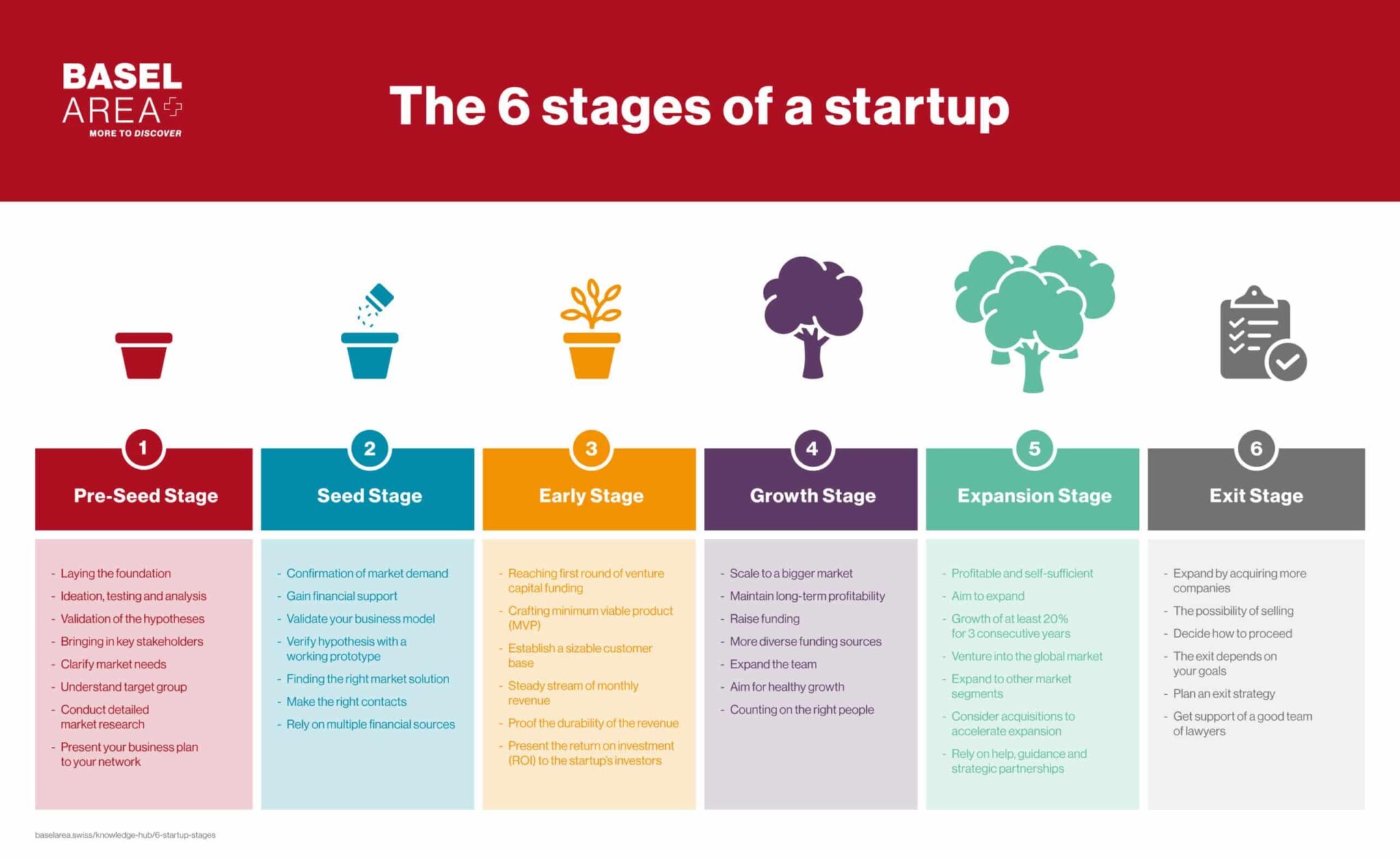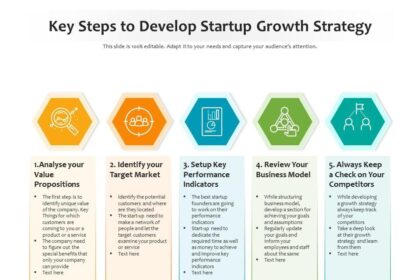In the dynamic world of entrepreneurship, the journey from a fledgling idea to a thriving startup often hinges on one critical factor: funding. As the lifeblood of innovation and growth, securing the right financial backing can mean the difference between success and stagnation. But with an ever-evolving ecosystem of investment options, ranging from angel investors and venture capitalists to crowdfunding and bootstrapping, navigating the startup funding landscape can feel akin to wandering through a labyrinth. In this guide, we’ll illuminate the pathways to successful funding, unravel the complexities of various financing avenues, and equip aspiring entrepreneurs with the knowledge needed to make informed decisions. Whether you’re just contemplating your first startup or seeking to scale your venture, understanding the intricacies of funding is essential for turning your vision into reality. Join us as we explore essential strategies and insights that will empower you to confidently embark on your funding journey.
Understanding Different Funding Sources for Startups
Startups often have a range of funding sources available to them, each with unique advantages and potential drawbacks. Bootstrapping remains a popular choice for many entrepreneurs, as it allows them to maintain full control over their business decisions while minimizing debt and external interference. Conversely, angel investors can provide not only capital but also invaluable mentorship and industry connections, essential for navigating the early stages of a startup. Other avenues like venture capital offer significant funding but often come with strings attached, including a portion of equity and a seat at the table for investors who want a say in company direction.
Furthermore, emerging alternatives like crowdfunding platforms enable startups to raise money through small contributions from a large number of people, effectively turning potential customers into backers. Additionally, grants and competitions can provide funding without equity loss, but are often highly competitive and time-intensive. To understand the landscape better, consider the table below, which summarizes some key differences among these funding sources:
| Funding Source | Equity Taken | Control | Speed of Funding |
|---|---|---|---|
| Bootstrapping | No | High | Fast |
| Angel Investors | Low | Moderate | Medium |
| Venture Capital | High | Low | Slow |
| Crowdfunding | No | High | Medium |
| Grants | No | High | Variable |

Crafting a Compelling Pitch to Attract Investors
To successfully grab the attention of potential investors, your pitch must tell a story that resonates. Start by clearly defining the problem your startup addresses and how your solution stands out in a crowded market. Use compelling data and anecdotes to paint a picture of the impact your venture can have. Investors are drawn to narratives that illustrate a strong need or demand, so consider employing the following strategies to enhance your presentation:
- Emphasize Market Opportunity: Highlight the size and growth potential of your target market.
- Showcase Your Unique Value Proposition: What makes your product or service indispensable?
- Present a Solid Business Model: Explain how you plan to generate revenue and sustain growth.
- Highlight Your Team: Introduce key team members and their expertise that lend credibility to your vision.
Furthermore, visuals can significantly bolster your pitch, making it easier for investors to grasp the essence of your business at a glance. Consider employing a concise financial projection table that breaks down the anticipated revenue streams and key financial metrics over the next three to five years. A well-organized presentation not only conveys professionalism but also instills confidence in your capabilities. Below is a basic example of how such a table might look:
| Year | Revenue | Expenses | Profit |
|---|---|---|---|
| Year 1 | $150,000 | $100,000 | $50,000 |
| Year 2 | $250,000 | $160,000 | $90,000 |
| Year 3 | $400,000 | $220,000 | $180,000 |

Building Relationships: Networking Strategies for Founders
Building strong connections within the entrepreneurial ecosystem is essential for founders looking to navigate the intricacies of startup funding. Networking serves as a powerful catalyst for creating opportunities, sharing knowledge, and accessing resources. Consider actively participating in various entrepreneurial events—whether they are conferences, workshops, or local meetups. These venues not only facilitate valuable face-to-face interactions but also allow you to engage with potential investors who are already interested in innovative ideas. Equally beneficial are online platforms like LinkedIn, where you can foster professional relationships by joining relevant groups and contributing to discussions. Regularly sharing your insights or experiences can help you stand out and attract the attention of those who share your interests or goals.
To make the most of your networking efforts, it’s crucial to approach relationships with a long-term perspective. Here are a few strategies to keep in mind:
- Be Authentic: Show genuine interest in others and their ventures; people appreciate authenticity.
- Follow Up: After meeting someone, send a brief message to touch base and keep the conversation going.
- Offer Value: Share resources or connect individuals that could benefit from knowing each other.
- Diversify Your Network: Engage with founders across various industries; insights from different sectors can be invaluable.
Consider this simple framework for managing your networking activities:
| Networking Activity | Purpose | Follow-Up |
|---|---|---|
| Industry Conferences | Connect with investors and peers | Email with insights shared |
| Local Meetups | Find local support and mentorship | Meet for coffee or lunch |
| Online Workshops | Skill development and new connections | Message group members for collaboration |

Navigating Legal and Financial Considerations in Funding Deals
When entering the realm of startup funding, understanding the intricate legal and financial frameworks is paramount. As entrepreneurs seek to attract investors, they must ensure compliance with both local and international regulations. This entails navigating a maze of contractual agreements, securities laws, and intellectual property protections. Entrepreneurs should be prepared to engage with legal counsel to help construct and review contracts, safeguarding their interests while making necessary disclosures to potential investors. It is equally crucial to maintain transparency about the startup’s financial health, including cash flow statements and balance sheets, which will provide a comprehensive view of the business’s viability.
Financial considerations also play a vital role in structuring funding deals. Startups need to assess different funding options carefully, such as equity financing, convertible notes, or debt financing, each carrying unique implications for ownership and repayment. The decision should reflect not only immediate capital requirements but also long-term growth strategies. To streamline these choices, a summary table can clarify the main characteristics:
| Funding Type | Ownership Impact | Repayment Obligation |
|---|---|---|
| Equity Financing | Dilution of ownership | No repayment |
| Convertible Notes | Deferred dilution | Convert to equity or repay |
| Debt Financing | No dilution | Regular payment obligations |
By thoroughly understanding these legalities and financial implications, startup founders can create favorable conditions for funding opportunities, ensuring not only the survival but the long-term success of their ventures.
The Conclusion
As we draw the curtain on our journey through the intricate and often exhilarating terrain of startup funding, it becomes clear that success in this realm is not merely about securing financial backing. It’s about understanding the nuances, forging valuable connections, and maintaining the tenacity to keep your vision alive, even when faced with challenges.
Remember, every funding opportunity is a stepping stone — whether that leads to a rainmaker investor or a serendipitous partnership, each experience serves to refine your craft and clarify your purpose. Armed with the insights we’ve shared, you can confidently navigate this fast-paced landscape, transforming obstacles into opportunities and dreams into reality.
In the grand tapestry of entrepreneurship, funding is but one thread. So as you embark on this adventure, remain adaptable, stay curious, and believe in the uniqueness of your ideas. With perseverance and the right strategies, your startup can not only survive but thrive amid the dynamic currents of innovation. Here’s to your success — may your journey be as rewarding as your destination.



